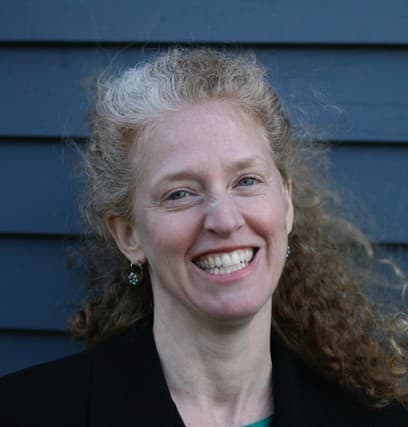Advertisement
Commentary
The Number Of Kids With Autism Keeps Growing. Why Aren't We Helping Them More?

Our eldest child, Sam, was 26 months old when he was diagnosed with autism in August 2000. I was concerned Sam wasn’t putting words together into phrases like his cousin, and our pediatrician recommended that a state-funded early intervention team evaluate him.
As I started reading about autism, I realized Sam exhibited many of the common warning signs. He didn’t make eye contact and didn’t respond consistently to his name; he played primarily with a few, mostly electronic, toys in repetitive, unproductive ways; he had deep and unusual fears, including of other people; when others in his playgroup gathered around a peer who was crying, Sam didn’t seem to even notice.
If you aren't as deeply immersed as I am in the world of autism, you might not know that the Centers for Disease Control and Prevention (CDC) released its latest biennial report on the prevalence of Autism Spectrum Disorder (ASD) this spring.
The report received scant media attention, and the headlines it generated mostly told the well-worn, banal story that autism is not really increasing — diagnosis is just better. However, that debate misses the forest for the trees.
As I read about autism, I realized Sam exhibited many of the common warning signs.
The CDC announced it had found 1 in 59 of the children studied over 11 geographical areas had autism in 2014. Yes, you read that correctly: 1 in 59. The CDC concluded its report by stating:
With prevalence of ASD reaching nearly 3 percent in some communities and representing an increase of 150 percent since 2000, ASD is an urgent public health concern that could benefit from enhanced strategies to help identify ASD earlier; to determine possible risk factors; and to address the growing behavioral, educational, residential and occupational needs of this population.
One important step toward addressing this “urgent public health concern” would be allocating more money for autism research and services.
Last fall, the Federal Interagency Autism Coordinating Committee (IACC) recommended doubling the federal and private autism research budget to $685 million by 2020. Instead, the National Institutes for Health estimated fiscal year 2018 funding for autism research is lower than the amount spent in 2013.
The IACC also identified 23 specific areas for increased investment in autism research and services, including early intervention. Studies have demonstrated early intervention significantly improves toddlers’ functioning, while decreasing some of the more disabling effects of ASD.
Expanded early identification and intervention services can result in a higher quality of life for people with autism and lower long-term costs for society. But according to the CDC, only 42 percent of children who were ultimately diagnosed with ASD had a comprehensive evaluation by 36 months. Most U.S. children aren’t diagnosed until they are at least 4 years old. The CDC emphasized that significant disparities in diagnosis remain — primarily related to socioeconomic factors, geography and race/ethnicity — which lead to continued under-diagnosis in underserved communities. (For instance, the CDC found that autism prevalence varied widely among its 11 testing sites, ranging from 1 in 34 in New Jersey to 1 in 76 in Arkansas.)
Advertisement
At just 26 months old, Sam was diagnosed on the earlier side. Fortunately for us, we live in a Boston suburb and had access to cutting-edge medical professionals to make the diagnosis and a well-funded early intervention/school system to provide services. Our lives became a whirlwind of doctors’ appointments and therapy sessions. A steady stream of state-funded therapists worked one-on-one with Sam in our home several hours each day. Usually, I participated so I could learn techniques to communicate with my beloved son.
My husband and I mostly stopped socializing since it was impossible to carry on a conversation when Sam was around. We were always on guard to ensure that Sam wasn’t ripping something off the wall, running away from us or having a meltdown because some minute detail of his daily routine changed. I indefinitely postponed my plan to return to my job as a lawyer, a “choice” we were financially fortunate to be able to make.
That early investment in Sam’s health and education has paid off. As Sam’s communication and self-regulation abilities have increased, we realize daily that his cognition is higher than initially assumed.
Access to life-changing medical care and support services shouldn’t depend on which state you live in, your socioeconomic situation or your race and ethnicity.
After finishing his senior year at our public high school, Sam has lived at Riverview, a residential school for students with learning differences on Cape Cod. There, Sam learns “daily living skills” such as cooking, household chores and managing his daily schedule. He practices taking public transportation, managing a budget and, perhaps most importantly, learning “rules” about social expectations that us neurotypicals simply intuit. Sam also attends a vocational program at Cape Cod Community College. Hopefully, he'll be able to find paid employment upon graduation.
Access to life-changing medical care and support services shouldn’t depend on which state you live in, your socioeconomic situation or your race and ethnicity.
Our government has the opportunity to allocate more resources towards scientific research and supportive services for all people with autism. One in 59 children can’t wait.
